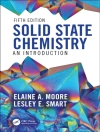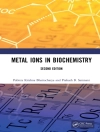This five-volume series provides a comprehensive overview of all important aspects of modern drying technology, concentrating on the transfer of cutting-edge research results to industrial use.
Volume 5 is dedicated to process intensification by hybrid processes that combine convective or contact heat transfer with microwaves, ultrasound or radiation. Process intensification by more efficient choice, distribution, and flow of the drying medium – such as impinging jet drying, pulse combustion drying, superheated steam drying, drying in specially designed spouted beds – are thoroughly discussed.
Moreover, methods that favorably affect the process by changing the structure of the drying product, e.g. foaming, electroporation, are treated. Emphasis is placed on drying, including freeze-drying, of sensitive materials such as foods, biomaterials and pharmaceuticals.
Released Volumes of Modern Drying Technology:
* Volume 1: Computational Tools at Different Scales
ISBN 978-3-527-31556-7
* Volume 2: Experimental Techniques
ISBN 978-3-527-31557-4
* Volume 3: Product Quality and Formulation
ISBN 978-3-527-31558-1
* Volume 4: Energy Savings
ISBN 978-3-527-31559-8
* Set (Volume 1-5)
ISBN 978-3-527-31554-3
Innehållsförteckning
Preface
Recommended Notation
EFCE Working Party on Drying: Address List
IMPINGING JET DRYING
Application
Single Nozzle
Nozzle Fields
Summary of the Nusselt Functions
Design of Nozzle Field
Conclusion
PULSE COMBUSTION DRYING
Principle of Pulse Combustion
Pulse Combustors: Design and Operation
Aerodynamics, Heat and Mass Transfer
Modeling of Pulse Combustion Drying
Pulse Combustion in Drying
SUPERHEATED STEAM DRYING OF FOODS AND BIOMATERIALS
Introduction
Principle of Superheated Steam Drying (SSD)
Atmospheric-Pressure Superheated Steam Drying
Low-Pressure Superheated Steam Drying (LPSSD)
Application of LPSSD to Improve the Quality of Foods and Biomaterials
Concluding Remarks
INTENSIFICATION OF FLUIDIZED-BED PROCESSES FOR DRYING AND FORMULATION
Introduction
Intensification by Apparatus and Flow Design
Intensification by Contact Heating
Further Methods of Intensification
Conclusion
INTENSIFICATION OF FREEZE-DRYING FOR THE PHARMACEUTICAL AND FOOD INDUSTRIES
Introduction
Exergetic Analysis (and Optimization) of the Freeze-Drying Process
Process Intensification in Vacuum Freeze-Drying of Liquids
Atmospheric Freeze-Drying
Use of Combined Technologies for Drying Heat-Sensitive Products
Continuous Freeze-Drying
Conclusions
DRYING OF FOAMED MATERIALS
Introduction
Foam Properties
Foam Spray Drying
Foam-Mat Drying
Summary
PROCESS-INDUCED MINIMIZATION OF MASS TRANSFER BARRIER FOR IMPROVED DRYING
Introduction
Structural Characterization of Plant Raw Materials and Impact of PEF and Ultrasound
Pulsed Electric Field (PEF) Application as a Pretreatment
Contact Ultrasound for Combined Drying Processes
Conclusion
DRYING ASSISTED BY POWER ULTRASOUND
Introduction
Ultrasound
Ultrasonic Equipment
Influence of the Main Process Variables on Drying Intensification by Ultrasound
Conclusions
MICROWAVE-ASSISTED DRYING OF FOODS – EQUIPMENT, PROCESS AND PRODUCT QUALITY
Introduction
Microwave-Assisted Drying of Foods
Microwave-Assisted Drying Equipment
Microwave-Assisted Drying Process
Microwave-Assisted Drying Process Control and Optimal Operation
Concluding Remarks
INFRARED DRYING
Introduction
Radiation Heat Transfer
Classification, Research, and Applications of Radiation Drying
Types of Radiators
Interaction between Matter and Infrared Radiation
Kinetics of Infrared Drying
Infrared Drying Combined with other Types of Drying
Conclusions
Index
Om författaren
Professor Dr. Ing. Evangelos Tsotsas holds the Chair of Thermal Process Engineering at Otto von Guericke University Magdeburg (Germany) since 1994. Prior to this, he was a Senior Process Specialist at the Dow Chemical Company. He has authored about 300 papers in refereed journals and conference proceedings, and is the recipient of the Hosokawa Award for Innovation and the Process Net Award for Excellence in Drying Research. He has served in various functions in organizations such as the German Research Foundation (DFG), the Alexander von Humboldt Foundation, and the European and German Working Party on Drying.
Professor Arun S. Mujumdar has been Professor of Mechanical Engineering at the National University of Singapore, Singapore since 2000. Prior to this he was Professor of Chemical Engineering at Mc Gill University, Canada. He has published over 450 journal papers, authored 2 books and over 100 book chapters, edited or co-edited over 50 books including the Handbook of Industrial Drying. He has been Editor-in-chief of the archival journal Drying Technology since 1988. Recipient of numerous international awards, he has been conferred Doctor Honoris Causa by the Technical University of Lodz, Poland and University of Lyon1, France.












